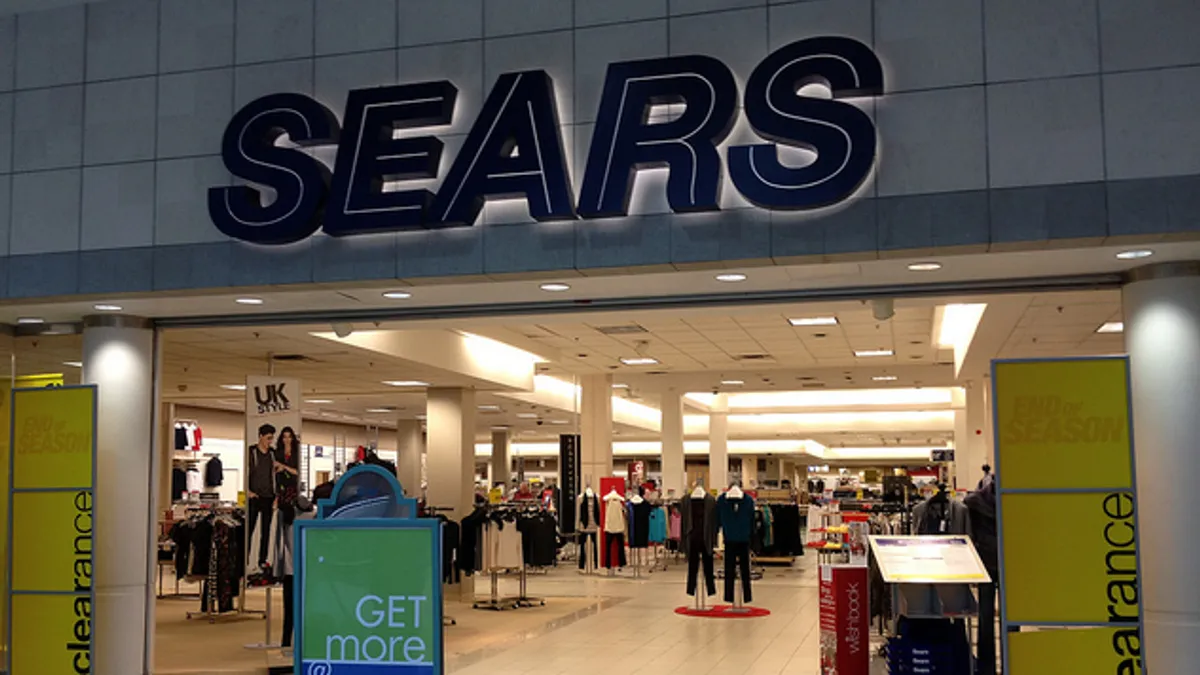Dive Brief:
- Sears Holdings Corp., parent company of Sears and Kmart, ran no national TV advertisements in December during the key holiday period, according to a report by The Wall Street Journal citing data from iSpot.tv. The last spots the company aired in the usually ad-heavy holiday season were on the Friday and Saturday after Thanksgiving.
- This marked a major drop from the estimated $8.4 million Sears Holdings spent on TV ads that ran in December 2016, per the Journal. In comparison, Macy's spent $32 million on national TV ads during that timeframe and J.C. Penney spent $27 million, according to the iSpot data.
- As Sears has struggled over the past few years, it's continued to cut spending on TV and newspaper ads by about two-thirds, while ramping up spending on digital. In 2016, its digital marketing spend exceeded newspaper spend. Sears executives have touted the benefits of digital marketing, saying its more cost-effective than traditional channels.
Dive Insight:
Sears isn't alone in reconfiguring where TV fits into its marketing mix, especially as more consumers cut the cord on cable but TV ad inventory continues to command high prices. Other brands like Adidas are also beginning to shun TV ads in favor of digital as a way to boost e-commerce sales and engagement and appeal to younger consumers that spend more time on their mobile phones and other devices. In early 2017, Adidas ranked 511th in U.S. TV ad spend, per Business Insider.
However, the 2017 holiday season still appeared to be a bright spot for TV advertising overall, according to Kantar Media data, with $667.1 million spent on national TV ads between Oct. 30 and Nov. 26 compared to $604.5 million in the same period in 2016. Many retailers scaled back on Black Friday ads, which totaled $90.4 million this past season, down from $113.3 million in 2016. Walmart was the biggest spender on TV ads during the holidays at $84.2 million, 16% more than the year prior. Overall, digital advertising revenue increased 22% to $72.5 billion in 2016 over $59.6 billion in 2015, according to the Interactive Advertising Bureau, marking the first time digital surpassed TV in ad spending.
Still, not everyone is as enamored with digital advertising as they once were thanks to a number of issues including transparency, pricing and brand safety that commanded industry conversation last year. Big-name brands including Proctor & Gamble and Unilever both peeled back their digital ad spending considerably in 2017, with P&G eyeing more TV advertising as a result.










